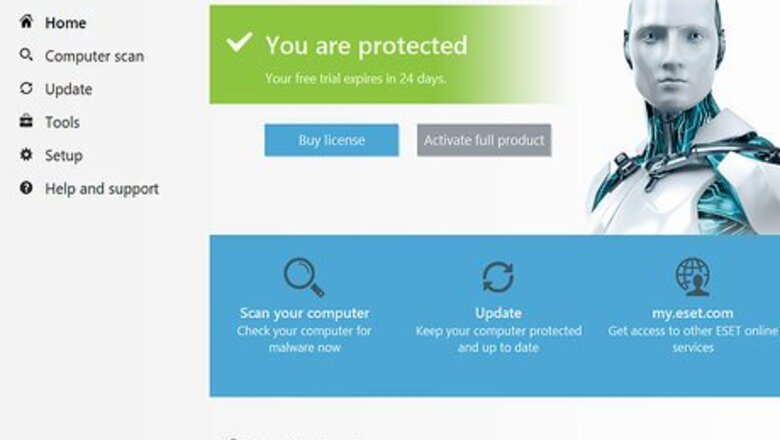
views
- You can download a harmless test virus from https://www.eicar.org to test your antivirus software.
- You can also get a virus from torrent and pirated software downloads, clicking certain ads, and opening attachments on junk emails.
- Before getting a virus on purpose, back up your data and remove sensitive information from your computer. Use a virtual machine and disconnect from the internet.
Downloading a Test Virus

Make sure that your antivirus software is active. For the test virus to be detected, you'll want your computer's antivirus program running. Keep in mind that the test virus isn't actually a virus, so it won't harm your computer. On Windows, you have a program called Windows Defender that should be on by default. On Mac, you'll need to use a third-party antivirus program like Malwarebytes or AVG.
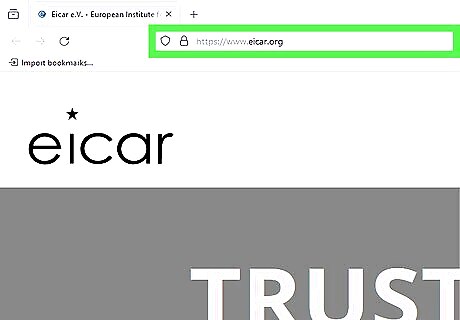
Open the EICAR website. Go to https://www.eicar.org/ in your computer's browser. EICAR is a European IT security firm that, among other things, helps IT departments test their networks' security measures.

Click the DOWNLOAD ANTI MALWARE TESTFILE tab. It's in the dark-blue banner near the top of the page. Doing so opens the EICAR disclaimer. You can read through this disclaimer and explanation of use before proceeding if you have any questions about how the test virus should be used. If your antivirus software scans the file and puts it in quarantine, you may be unable to delete it. Consult your antivirus software company for assistance if this happens.

Scroll down to the "Download" section. It's near the bottom of the page.

Click an Download below one of the four download files. EICAR provides the test virus in four different files for different purposes. The four test files are as follows: EICAR.ORG-COM: This is the main test virus file. It is a text file that contains a string of 68 characters. It should be enough to trigger your antivirus scanner. EICAR.ORG-TXT: This is the same file as the first file, but with a different file name. If you experience problems downloading the first file, you can download this file instead. Then you will need to rename the file "eicar.com" EICAR.ORG-ZIP: This download contains the main test virus file in a ZIP file. You can use this download to see if your antivirus scanner can scan viruses within a ZIP archive. EICAR.ORG-ZIP.2: This download contains the test virus within a zip file inside another zip file. You can use this download to see if your antivirus scanner can detect viruses within a ZIP archive two layers deep.
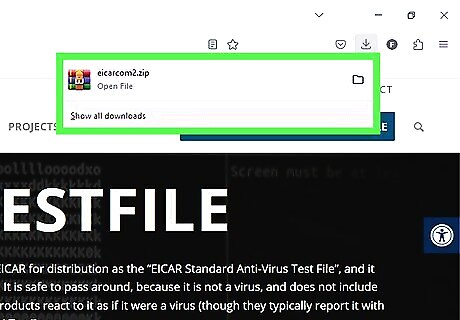
Wait for the file to download. It may take several seconds to begin downloading. If the file successfully makes it to your computer's "Downloads" location, you will most likely see a pop-up warning you that a malicious file was detected. If you're on a Windows computer and your Windows Defender antivirus is enabled, the file won't even be allowed to download. You can circumvent this by re-downloading the file several times in quick succession, clicking the Windows Defender pop-up notification, clicking the name of the file in the "Current threats" section, checking the "Allow on device" box, clicking Start actions, and clicking Allow when prompted.
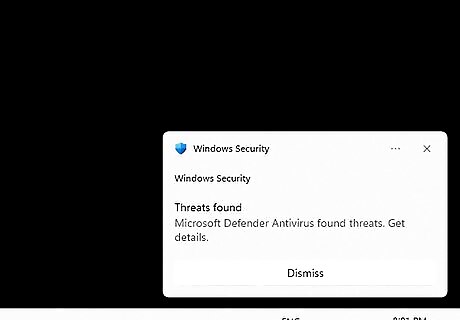
Run an antivirus scan. If the file still hasn't been picked up by your antivirus program, manually scan for threats from within your antivirus program. This will usually cause the file to be found, quarantined, and removed from your computer. If your antivirus scan still doesn't pick up the file, you should invest in a different antivirus program.
Downloading a Real Virus
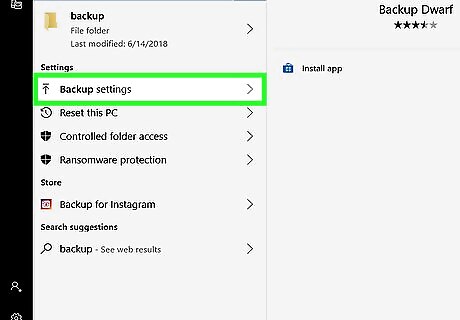
Back up your computer. Since viruses can quickly render a computer inoperable, backing up your computer's files to an external hard drive is recommended.
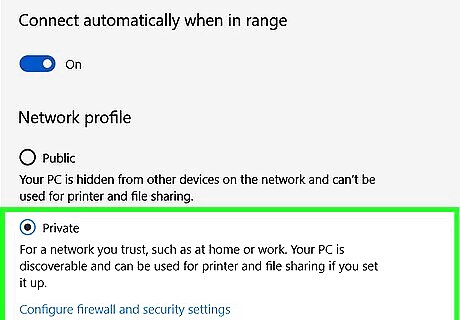
Ensure that your computer is in a secure environment. Viruses are designed to spread, and it is irresponsible to test viruses on a computer that is not isolated from the internet. Ensure that your test environment is contained so that the viruses you are testing cannot spread to computers that you don't want infected. You'll also want to make sure that your computer doesn't have any sensitive information (e.g., credit card numbers, social security identification, payment records, etc.) on it just in case your virus can copy the contents of your hard drive. Make sure that the computer or computers you are testing on are not connected to the Internet when you open an infected file. For greater security, test viruses using a virtual machine on a physical computer that is not connected to the internet.
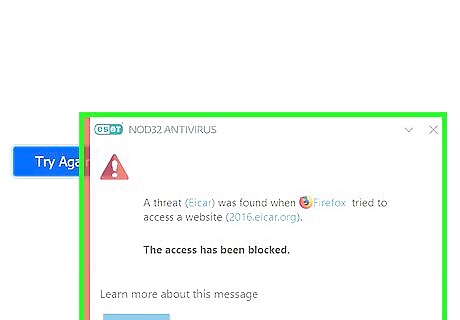
Understand the risks and legality. Infecting your own computer can jeopardize your data and personal information. If your computer is connected to the internet or other computers on a network, you run the risk of infecting others. In most countries, infecting someone's computer with a virus is illegal. If you are trying to test your antivirus software, it is strongly recommended that you use the test file in the previous method.

Connect your computer directly to the internet. Most routers contain hardware firewalls that can help protect your computer. For maximum vulnerability, you should connect your modem directly to your computer via an Ethernet cable, which will bypass the router's security.

Disable your computer's Firewall. The firewall serves as a built-in threat deterrent, so disabling it will allow unauthorized programs to access your computer. In some cases, disabling your computer's Firewall will also allow unauthorized users to access your network.
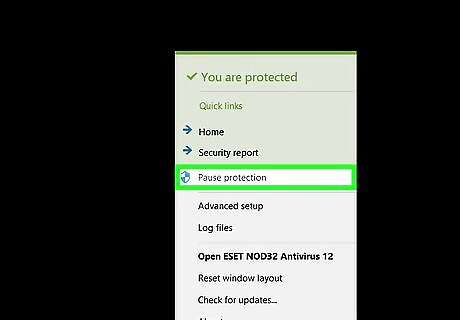
Disable or uninstall your antivirus. Most antivirus programs do an admirable job of catching most viruses, so you'll want to disable or remove your antivirus software completely before trying to infect the computer.
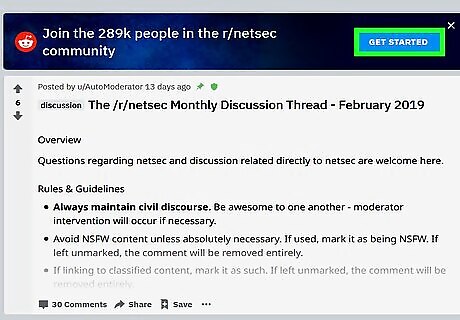
Visit internet security communities. There are a variety of communities online dedicated to testing internet security, and you may be able to find links to known viruses in the community discussions. One of the most popular internet security (NetSec) communities is the NetSec subreddit. You can find a variety of discussions and links to sites containing specific viruses.

Download files with known viruses. One of the most popular ways for viruses to be spread is through pirated media and software. Look for "cracks" or "serials" for popular programs requiring a file to run. These files often contain viruses that execute when you run the crack for the program. Torrents are a very popular way to share these files. When browsing torrent sites, look for torrents with low ratings and comments from other users warning about viruses. These are the ones you want. P2P sharing programs are another popular way to spread viruses. Programs like Kazaa and Gnutella are some of the more popular options. Many websites, known as "warez" sites, will offer "free" downloads for virtually any program. These are almost always infected with viruses and adware, and the program itself rarely works.
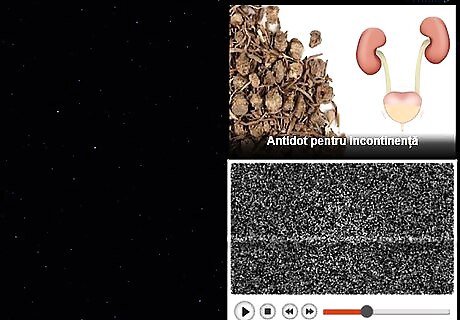
Click on shady banners and advertisements. Many advertisements—especially ones about enhancement-based drugs or services—redirect to shady sites that contain virus downloads.
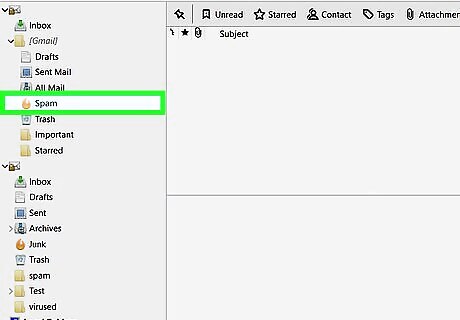
Download attachments from spam emails. Open your email's Spam or Junk folder, then open an email from an unknown sender and look for a download button or link. Sometimes simply opening a spam email will be enough to contract a virus. For some spam emails, you'll have to click a link in the email to prompt a virus file to download.

Download screensaver files. Screensavers are traditionally some of the most infected files around, especially when downloaded from untrustworthy sources (e.g., torrenting websites). This method will typically only work for Windows computers, as the screensaver (.scr) files are usually only executable on a Windows computer.
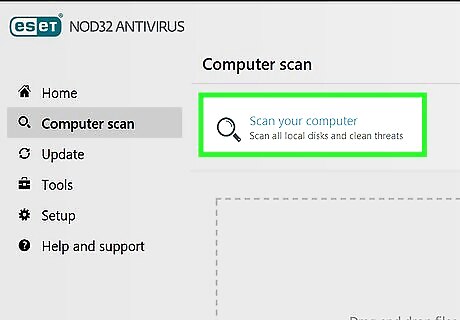
Get rid of the virus when your test is complete. When the test is complete, run multiple virus scans and delete all the infected files you downloaded. You may need to use Safe Mode to |get rid of all the viruses. In extreme cases, you may have to erase your computer's hard drive and reinstall the operating system to wipe out all traces of the virus.




















Comments
0 comment